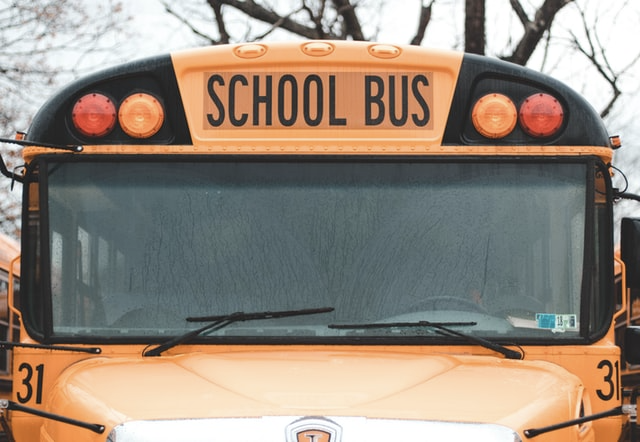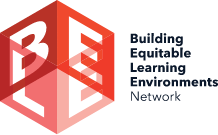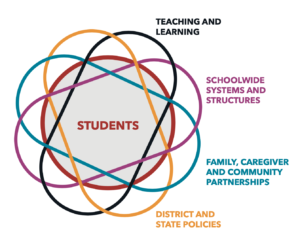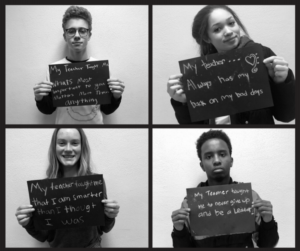[Cross-posted from the BELE Network Medium]
By The BELE Network

Every day, educators are going above and beyond to support their students in this time of uncertainty and crisis. While we always place tremendous value on the good work done by teachers, the BELE Network wants to extend extra gratitude as Teacher Appreciation Week kicks off nationwide. Many educators are quite literally on the front lines serving during the COVID-19 pandemic, including those at Renaissance West STEAM School in Charlotte North Carolina:
“I have been delivering the work packets to one of my homeless students and in addition to the work I’ve included some fun activities like a puzzle, cards, art supplies, snacks and a pair of binoculars. He’s been cooped up and bored inside a hotel room all day. It gave me a chance to lay eyes on him and say hello. It made me feel really good to hear his mom say, “Thank you for making this fun for us. He misses you.” — Stephanie Logan, 2nd Grade Teacher
“Covid-19 provided me an opportunity to go through full circle with raising money for local, Charlotte, food banks in August and then this March I was honored to volunteer with my school and immediate family passing out food to the families we serve. Talk about heartwarming and joy producing work!” — Cynthia L Dey, STEAM Facilitator, Grades K-5
“I have delivered hotspots and chromebooks to several students’ residents. Before I leave I ensure that our students can connect to the internet, log into their chromebook, and access their school work. Immersing myself into giving back to my students during this pandemic is one of my top priorities.” — Tawander Whittington, CTE Business Education Teacher, Grades 6 & 7
Let’s hear it for our teachers — this and every week.
— — —
All across the United States, schools and districts are navigating a bumpy transition to distance learning in response to COVID-19. The move from classrooms to remote-learning environments has exposed countless inequities in our society. As educators and policymakers race to provide students with the tools they need to continue learning, flexibility, speed and creativity have never been needed more in the education environment.
These aspects are especially critical to bridging the gap for students of color and low-income students. Many students were already overcoming insurmountable hurdles, and without flexibility, speed and creativity we risk leaving a generation of young people further behind — academically, socially, and emotionally. Due to COVID-19 closures of schools, libraries, and other support systems, there is a major gap in filling basic needs so students have the opportunity to learn. Fortunately, we are seeing schools and districts leveraging age-old assets to solve unprecedented problems. Who knew school buses could be converted into literal bridges (on wheels) to help ensure students still have access to the basics — even during social distancing.
As districts navigate school closures and the adjustment to distance learning, many for the rest of the school year, some districts are deploying school buses to deliver support to students in need. Given an estimated 12 million children do not have broadband internet access at home, districts such as those in Austin, Texas and across South Carolina are equipping school bus fleets with Wi-Fi routers and parking them in underserved communities so students can access their online classes and curriculum. This is just one example of how districts can rethink and reconfigure the tools at their disposal to equitably address students’ needs.
Additionally, districts like those in Minnesota and Oregon are rallying their staff and infrastructure to prepare anywhere from hundreds to thousands of meals a day to be delivered to students and their families along existing school bus routes. One example comes from McGregor High School in rural Minnesota, where each week paraprofessionals deliver five breakfasts and lunches to over 250 students along bus routes.
Cheryl Meld, the school’s student support grants administrator, says that in addition to ensuring every student gets a meal, there have been other pervasive difficulties. “Internet connectivity has been a challenge. Coverage can be spotty,” Meld added. “We’ve loaned out all available school hot spots and additional ones have been provided by a local non-profit and a tribal agency. Yet even with enough units for each household, there is not always connectivity in remote areas.”
Never before have schools been forced to adapt so quickly by bringing the education to the students, instead of vice versa. Fortunately, this approach has had a positive ripple effect that extends beyond academic success and into the overall wellbeing of families in their community.
While we draw inspiration from those boldly and innovatively taking action to fill the gaps in our education system exacerbated by COVID-19, it’s important to remember that these gaps are far broader than academic curriculum alone can address. If we are to truly support our students, we must support them intentionally and holistically — or risk widening the equity gap even further. However, in this time of urgent and immediate need, we applaud the creative problem solving that is making a concrete, positive difference in the lives of students across the country. We hope that more and more districts continue to adopt measures like these to utilize existing infrastructure and bring support to their students.
The BELE Network is dedicated to reimagining our inequitable school system that has failed too many for too long, and is committed to transforming our classrooms into learning environments that nurture the intellectual, emotional and cultural growth of all students — especially students of color.
Learn more about BELE on our website, and access our resource library to make your learning environments more equitable.






Leave a Reply